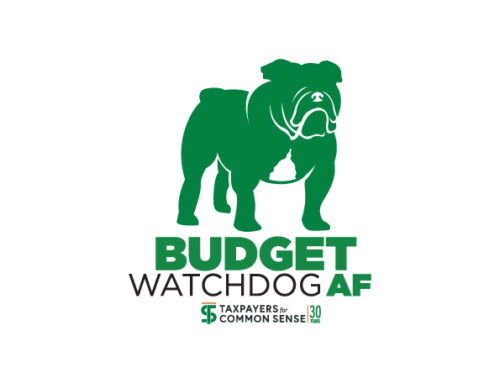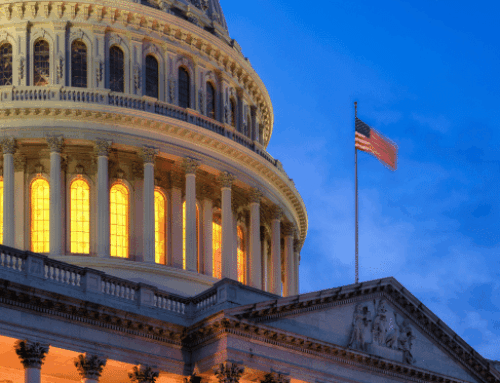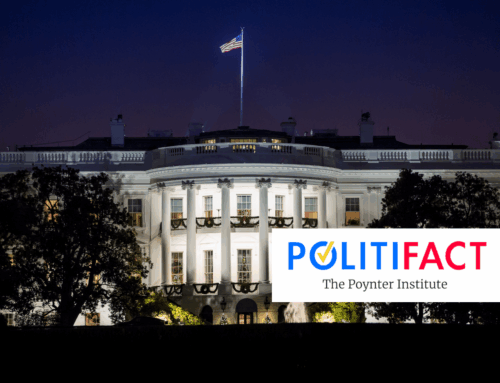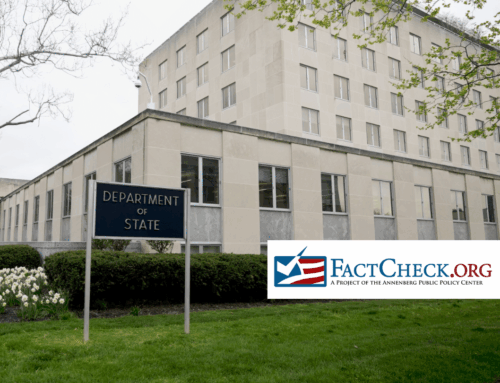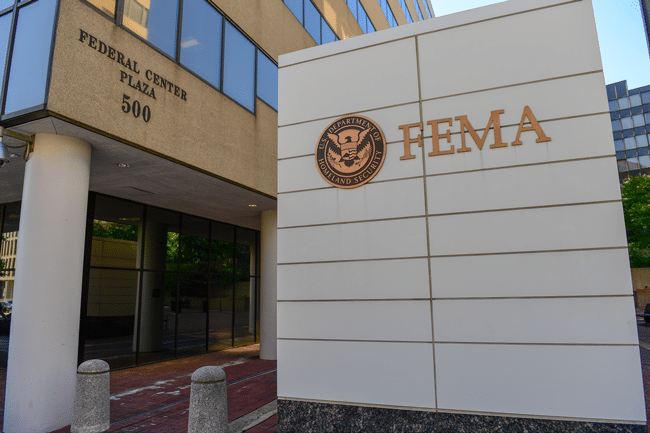The Congressional Budget Office just dropped a bombshell: Trump’s tariff policies could reduce deficits by $2.8 trillion over 10 years. Sounds great for fiscal hawks, right? Wrong. Steve Ellis and Josh Sewell break down why this “deficit reduction” is actually a massive tax increase on American families disguised as trade policy. From 25% tariffs on cars to inflation hitting working families hardest, discover why the CBO’s projections are both critically important and complete fiction. Plus: Why a $9.4 billion rescission package feels like arguing over the bar tab while your house is on fire.
Transcript
Announcer:
Welcome to Budget Watchdog All Federal, the podcast dedicated to making sense of the budget spending and tax issues facing the nation. Cut through the partisan rhetoric and talking points for the facts about what’s being talked about, bandied about and pushed to Washington, brought to you by taxpayers for common sense. And now the host of Budget Watchdog AF TCS President Steve Ellis.
Steve Ellis:
Welcome to All American Taxpayers Seeking Common Sense. You’ve made it to the right place for 30 years. TCS that’s taxpayers for common sense, has served as an independent nonpartisan budget watchdog group based in Washington dc We believe in fiscal policy for America that is based on facts. We believe in transparency and accountability because no matter where you are on the political spectrum, no one wants to see their tax dollars wasted. It’s early June, 2025 and the Congressional Budget Office has released a bombshell analysis of President Trump’s tariff policies. The numbers are staggering. $2.8 trillion in deficit reduction over 10 years, but at what cost? Economic contraction, inflation, and questions about who really pays the price. Joining me today to explain why and how this week’s CBO report is both critically important and complete fiction all at the same time is our director of research and policy, Josh Sewell. Josh, welcome back to the pod.
Josh Sewell:
Hey, thanks for having me, Steve. And I have to say your introduction, it perfectly captures the paradox we’re dealing with here.
Steve Ellis:
Alright, Josh, let’s start with the headline numbers. The CBO says that if the tariffs that were in effect as of May 13th were permanent, they would reduce deficits by $2.8 trillion over 10 years. Well, we’re budget watch. That sounds like great news for fiscal hawks, right?
Josh Sewell:
Well, Steve, that’s where the complete fiction part of your intro comes in. Yes, the government will collect more revenue two and a half trillion dollars before counting for economic effects. But here’s the thing, tariffs aren’t paid by foreign countries despite what some politicians claim. They’re actually paid by American importers who then pass those costs on to American consumers and businesses. So when we say quote deficit reduction unquote, we’re really talking about a massive tax increase on American families and businesses. And the CBO estimates this will boost inflation by 0.4 percentage points annually in 2025 and 2026, which directly reduces purchasing power of households.
Steve Ellis:
So Josh, it’s basically a consumption tax that hits lower income families harder.
Josh Sewell:
Exactly. The CBO notes that households at the lower end of the income distribution spend a greater share of their income on goods, which are more affected by tariffs than services. And so though they do point out that durable goods things, cars and appliances, which see the biggest price increases under tariffs represent a larger share of consumption for higher income households. But here’s what really gets me. We’re talking about using potential future tariff revenue to reduce deficits. At the same time, the house just passed the bill projected to add nearly $3 trillion to the debt through tax cuts and spending increases.
Steve Ellis:
Right. The timing is really remarkable. The one big beautiful bill we discussed on our last episode together would add roughly $3 trillion to deficits, like you said. And now we have tariffs projected to reduce deficits by $2.8 trillion. Seems like a strange coincidence.
Josh Sewell:
Yeah, it’s almost like they reverse engineered the tariff policy to offset the cost of their tax cuts. That’s not how good fiscal policy works. And quite frankly, it’s a moving target. The tariffs of May 13th, which is what the CBO analyzed are not the tariffs of today.
Steve Ellis:
Okay, so let’s talk about the economic effects. The CBO says real GDP will be 0.6% lower in 2035 than previously projected. What does that mean in practical terms?
Josh Sewell:
It means we’re making the economy smaller to collect more government revenue. Think about that for just a second. Lawmakers are deliberately shrinking the pie so the government can take a bigger slice of what’s left. So the CBO projects tariffs will reduce real GDP growth by 0.06 percentage points per year on average. Now that may sound small but compounded over a decade, it represents billions in lost economic output, fewer jobs, lower wages, and reduced innovation.
Steve Ellis:
So Josh, does the analysis assume that other countries don’t retaliate?
Josh Sewell:
Actually, the CBOs analysis does include expected retaliation, but they assume trading partners will impose retaliatory tariffs covering 50% of US exports at rates matching our tariff rates. So they’re already accounting for a trade war scenario, although there are numerous scenarios that could happen. The analysis also incorporates what they call uncertainty effects. Basically businesses delaying investments because those businesses don’t know what trade policy will look like next month, let alone next year.
Steve Ellis:
Josh, there’s been some legal drama around these tariffs. What’s the current status?
Josh Sewell:
This is where it gets interesting from a process perspective. So federal courts have actually struck down some of the tariffs implemented under emergency powers, but appellate courts have allowed the administration to keep collecting them while the cases work through the system. The CBO, they completed their analysis before these court decisions and the CBO notes that their projections assume the tariffs remain in place permanently. So if courts ultimately overturned significant portions of the tariff regime, these deficit reduction numbers could easily evaporate.
Steve Ellis:
Well, one thing we certainly know about tariffs in this administration, nothing is permanent. You turn around and it’s changed from the next day. It’s changed the next day. And so certainly that is a major assumption. Alright, so let’s talk about what tariffs are actually in place, at least as of today in this minute. This isn’t just the China tariffs from Trump’s first term, right?
Josh Sewell:
No, not even close. So the CBO analyzed tariffs implemented between January 6th and May 13th of this year. Now we’re talking about a 30% tariff on China, an additional 30% from what was already there. And Hong Kong, 25% on Canada and Mexico starting in March. I think it was 25% on stealing aluminum, 25% on most automobiles and a 10% reciprocal tariff on most countries. And also don’t forget the 25% on auto parts. And like you said, that’s just through May 13. The administration has since implemented a 50% tariff on stealing aluminum instead of 25. That went into effect this week, and I didn’t check the headlines this morning, I’ll be honest.
Steve Ellis:
Understood, understood. The scope is really just breathtaking. What does this mean for American families trying to buy a car or home appliances or just getting their regular everyday goods?
Josh Sewell:
CBO specifically mentions a fact that durable goods will see the largest price increases. So yes, cars, refrigerators, washing machines, all getting more expensive, that 25% auto tariff alone is going to be felt directly by anyone shopping for a vehicle.
Steve Ellis:
Ouch. My vehicles are 2001, nearly 25 years old, but they just passed inspection, so I’m good for two more years. So let’s hoping for more sanity then.
Josh Sewell:
Steve. Here’s what’s particularly frustrating. These aren’t targeted measures designed to address specific trade violations or protect critical industries. This tariff regime is a broad-based tax increase disguised as trade policy.
Steve Ellis:
Josh, let’s step back and look at this. From a budget process perspective, we have tariffs raising revenue and reducing deficits while Congress passes bills increasing deficits. What does this say about fiscal responsibility in Washington?
Josh Sewell:
This is the latest example showing how broken our budget process has become. Instead of making hard choices about spending priorities or tax policy, we’re using trade policy as a piggy bank. So it’s like robbing Peter to pay Paul except Peter is American consumers and Paul is also wealthy American consumers who want more tax cuts. The reconciliation bill we discussed last episode just makes deep cuts to programs for low income Americans while providing tax benefits that frankly skewed toward higher earners. Now, lawmakers are layering on tariffs that act as a regressive tax to pay for it all. It’s fiscal policy through the looking glass. And who’s to say that task cuts and spending stay and tariff revenue disappears? I mean, if they were truly reciprocal tariffs imposed to reduce unfair trade barriers as the president claims, then when our trading partners reduce their tariffs, ours would go down as well. Besides the fact that tariffs have yo-yos so much as you mentioned that in just the last few months, it’s hard to have any confidence that these tariffs will stay at this level for the next 10 years, which would also include a couple new presidents potentially.
Steve Ellis:
Exactly. And I think that point, that underscores a certain point and that is that we were talking about policymakers and obviously the reconciliation package, the administration has had some hand in certainly getting it over the line in the house, but it’s something that Congress really drafted. The tariffs are similarly. It’s really something that the president has been pushing and he owns that as far as that tax on consumers. But now let’s go back to the yo-yoing. I mean, that gets to the uncertainty factor that you’ve mentioned. It’s not just budgeting. Businesses don’t know what’s coming next,
Josh Sewell:
Right? And the CBO explicitly tried to account for this. And when businesses can’t plan because trade policy changes on a weekly or hourly basis, businesses inevitably delay investments. That just reduces productivity growth and economic output over time. And as you said, the Trump administration has a pattern of announcing tariffs, pausing them, implementing them, negotiating exemptions. That was what they did in the first administration and they’ve started that pattern even more extreme in this administration. Just this spring, remember they announced what they called liberation day tariffs. That would’ve been even more extensive, fully reciprocal, basically dollar for dollar in their opinion and then walk them back.
Steve Ellis:
Yeah, I saw that Wall Street has a term for this. Taco Trump always chickens out, which I think is not maybe smart on their part to point that out, but nevertheless, it has been the case. Now speaking of exemptions, didn’t the 20 18 20 19 tariffs have extensive exemption processes for domestic companies?
Josh Sewell:
Oh, a ton. Yeah. And the CBO notes that this is a major uncertainty in the CBO projections. So yes, during the first Trump administration, there were established mechanisms for importers to apply for exemptions. Honestly, it wasn’t that transparent and some people who you thought should qualify for an exemption didn’t get it and others who arguably didn’t qualify did. But that again, added to the uncertainty about in the first administration and I think will be something that happens here again. Now the current analysis from CBO assumes, again, no exemptions beyond anything that’s already specified right now, but history repeats it and extensive exemption processes are implemented, the revenue could be substantially lower.
Steve Ellis:
So in other words, we can get all this economic disruption with less deficit reduction
Josh Sewell:
Could and probably will, but that’s the worst case scenario. So all the costs of higher prices and economic uncertainty without the offsetting government revenue that’s supposed to justify the policy. And frankly, you just have to wonder, what does the administration do to alleviate the pain from tariffs? Oh, well, I can tell you what they do. Steve, last time around, they shotgun cash to farmers left and right, farmers that were expected to lose export business. Some did, some didn’t to the tune of 23 billion in unbudgeted subsidies to farm businesses. And for months, the administration has said they plan to do this again, if agriculture is subject to retaliatory tariffs from our trading partners.
Steve Ellis:
Last time around, for instance, the soybean farmers lost significant market share of their exports, which are heavily weighted towards China to Brazil and some of that never came back, but this is just 23 billion that would be against any deficit reduction, any kind of revenue that you get from the tariffs, we’re just farming it out literally to farmers
Josh Sewell:
And Steve, if you expanded tariffs to the entire world and much higher level, which they are projecting to do, $23 billion is going to look like a deal. It’s going to be a lot more than 23 billion potentially.
Steve Ellis:
So you mentioned the world, Josh, so let’s talk about the international implications. Are we seeing other countries respond beyond just retaliatory tariffs?
Josh Sewell:
Yeah. CBO mentions that trading partners are probably waiting for negotiations to play out before retaliating fully, and that is what’s happening. But we’re already seeing some movement. The administration announced negotiations with the uk, if you remember, that resulted in an agreement In principle, though it hasn’t been consummated in a legally binding agreement yet. And what worries me is that we are fundamentally changing relationships with key allies and trading partners. So Canada and Mexico, they aren’t just trading partners, right? They’re literally physical neighbors of ours and strong allies and we’re hitting them with a 25% tariff ostensibly to address drug trafficking.
Steve Ellis:
So much of this has been that we’re losing against China and competition with China. You would think that it would make a lot more sense to rally all of our allies and have a concentrated effect because it’s clear that China has been engaging in unfair trade practices, has been doing industrial espionage and other things, that it’s not just the United States, it’s the world. And so you would think that you would want to get the US and everybody else targeting China to actually change their behavior rather than taking on all comers all the time. So going back to your point about using the tariffs against Canada and Mexico about drug trafficking, that brings up an interesting point about the justification for these tariffs. Some are framed as national security measures, others as a response to unfair trade practice. Does the justification matter for the economic effects
Josh Sewell:
Economically? No. A tariff is a tariff, whether it’s implemented for national security trading, rebalancing or revenue generation, the effects on prices, trade flows, economic output, they’re the same. But the justification does matter for policy consistency and international relations. So when you use national security justifications to impose tariffs on allies like Canada, you’re essentially saying you don’t trust your closest trading partners. That has implications well beyond trade policy. It’s also what has made the tariffs legally vulnerable to determinations of what is a national emergency and what isn’t. Congress has power of the purse and that includes tariffs. That’s the constitution. They just ceded that power in certain instances and this administration is pushing that as far as it can and most would say beyond what they can if they were honest about it.
Steve Ellis:
So Josh and fellow budget Watchdog AF faithful, looking ahead, what should taxpayers be watching for?
Josh Sewell:
Well, first I would watch your grocery bills and shopping receipts. The CBOs inflation estimate of 0.4 percentage points might sound abstract, but it translates to real money out of family budgets. Second, watch the court cases. If federal courts ultimately strike down significant portions of the tariff regime, the whole fiscal calculation changes. Third, watch what happens in the Senate with the reconciliation bill. It’s a long way from being over, but if they pass something close to the house version, we’ll have a massive deficit increase in tax bill paid for, again, supposedly paid for by a regressive tariff system or just a gigantic deficit. That’s not sustainable fiscal policy either way.
Steve Ellis:
So any final thoughts on what this episode tells us about fiscal responsibility in Washington?
Josh Sewell:
Sure. I have to say again that this whole episode illustrates how far we’ve drifted from genuine fiscal responsibility. We’re not making hard choices here in Washington about spending priorities or asking who should bear the burden of funding the government services that we apparently all demand. Instead, we’re using trade policy to mask the fiscal consequences of our political choices, real fiscal responsibility. It would involve honest debates, more hearings, more transparency, and having honest, open debates about what government should do and how to pay for it. Instead, we see budget gimmicks, creative accounting and policies that shift costs around rather than addressing them directly.
Steve Ellis:
And if you can believe this, Josh, while we’re talking about using tariffs to offset massive deficit spending, the White House just sent Congress a rescission package asking to cut a whopping 9.4 billion in previously approved spending.
Josh Sewell:
Yeah, Steve, the irony is so thick you could cut it with a knife. So we’re looking at this reconciliation bill that could add 3 trillion to the debt and the administration’s response is ask Congress to cancel $9.4 billion. That’s like trying to empty Lake Superior with the teaspoon.
Steve Ellis:
Okay, Josh, so for our listeners who might not be familiar, what exactly is a rescission
Josh Sewell:
Rescission? This is a process that allows presidents to ask Congress to cancel funds that have already been appropriated but not yet spent. Now, it came out of the budget and Impoundment Control Act of 1974 after President Nixon tried to unilaterally refuse to spend money that Congress had already approved. The law says presidents can’t just impound funds, but they can hold funds while they ask Congress to formally rescind those funds. Now Congress has 45 days to act once the president makes that formal request. Otherwise the funds must be spent by law. And a rescission importantly though, only takes 51 votes in the Senate.
Steve Ellis:
So to be clear, the President can send this package to Congress, hold the funds during that. Then if Congress doesn’t pass it, then he’s got to release the funds after a certain period of time.
Josh Sewell:
Absolutely. These are funds that have, Congress has already said, we want this money to be spent. The President is saying, actually, I think you should change your mind on this. And if Congress says no, we’re not going to change your mind, then it has to be spent.
Steve Ellis:
Alright, our budget watch IAF Faithful are a savvy bunch and following things, but this tool has been gathering dust. That’s probably why they hadn’t heard of it before.
Josh Sewell:
Yeah, pretty much. So President Clinton used it regularly. He sent Congress a rescission package every single year. I got about half of what he requested approved by Congress, but George W. Bush, Obama and Biden, they never touched it. Now Trump and his first administration did try it in 2018 and it passed the house, but it ended up dying in the Senate.
Steve Ellis:
Well, let’s get a little bit into the details. What’s in this package that’s got everyone so underwhelmed?
Josh Sewell:
So there’s 1.1 billion in cuts to the Corporation for Public Broadcasting. So they’re going after NPR and PBS again. And this is actually funds in 2026 and 2027 known as Advanced Appropriations. And there’s also 8.3 billion in foreign aid cuts. And this is mostly from U-S-A-I-D programs that the Doge has been reviewing this year. But here’s the thing, Steve, these are what you’d call the lowest hanging fruit for Republicans. Large swaths of Congressional Republicans support cutting these programs, or at least have said they support cutting these programs for years. But this is not the hard stuff like the Department of Education healthcare spending or science funding that Doge claims to have identified as needing to be eliminated. And right now, if you look at the Doge wall of receipts, they claim to have found 180 billion in savings, but most of that is outside of the stuff that’s in this current Rescissions package.
Steve Ellis:
Well, let’s be generous and say that Doge really did identify 180 billion in potential savings, which is questionable, but it’s certainly more than 9.4 billion that the White House is asking for.
Josh Sewell:
Exactly. It’s like Elon Musk criticized the reconciliation bill for undermining doer’s work and Deputy chief of Staff Steven Miller responded that, oh, rescissions, that’s the proper two lock in those savings. Well, where are they? I mean, this package is 5% of what Doge claims to have identified. It seems pretty small.
Steve Ellis:
Yeah, it sounds like they’re more interested in a political win than actual fiscal discipline.
Josh Sewell:
And I think that’s exactly what this is right now. They remember getting burned in 2018 when the Republican controlled Senate rejected their Recision package. So this time the White House is coordinating with congressional leadership and only putting forward stuff that’s in their mind guaranteed to pass. And Speaker Johnson plans to vote on it next week.
Steve Ellis:
So Josh, here’s what really caught my attention. OMB director Russell V said, this is just the first of many rescission bills and hinted at some pretty aggressive executive action,
Josh Sewell:
Right? He’s talking about potentially reviving the Supreme Court fight over impoundment authority, basically whether the president can unilaterally refuse to spend appropriated funds. He also mentioned pocket rescissions, which is s sending rescissions requests right before the fiscal year ends. So Congress kind of runs out of time to act. These would be major constitutional confrontations over overspending authority. Again, the IMP Empowerment Control Act has been the law of the land for 50 years and other presidents haven’t pushed it to the extreme that this administration says that they want to. And this is another one of those areas where it’s likely to be litigated if some of these things happen.
Steve Ellis:
Yeah, I saw that. He mentioned that. Russ mentioned that it was called the Impoundment Control Act, not the Impoundment Elimination Act, which is kind of convenient, especially considering, as we just discussed in Rescissions, he can impound for a period of time this funding. So I mean it’s essentially kind of playing games with words. So let me get this straight, Josh. We have a Congress passing a bill that could add trillions to the debt and administration using tariffs as a massive tax increase that could offset some of that debt. And now they’re picking fights over 9.4 billion in Rescissions while threatening constitutional crisis. Overspending authority.
Josh Sewell:
Yeah, Steve, you just perfectly summarized the state of fiscal policy here in dc We’re simultaneously having the biggest budget fights and the smallest budget fights. It’s like arguing over the bar tab while your house is on fire. And I think the real kicker, the rescission package amounts to about 0.6% of annual discretionary spending. We’re talking about 9.4 billion out of roughly 1.6 trillion. So it’s not even a rounding error.
Steve Ellis:
The disconnect between rhetoric about fiscal responsibility and the actual numbers is just staggering. And I’ve been doing this for more than 25 years.
Josh Sewell:
And you know that the rescission process is something that we at TCS support as a useful tool for genuine oversight and deficit reduction. But if an administration uses it for political theater instead of serious fiscal policy that undermines its credibility. If this rescissions package is just about getting a quick win on programs, Republicans already want to cut what happens when they need to use rescission for actually controversial but necessary cuts
Steve Ellis:
And budget watchdog faithful back in during the President George W. Bush administration, taxpayers for common Sense supported their proposed constitutional line item in Vito, which was really enhanced rescission authority. We believe in this process that this is something where Congress can get a do where the administration can shine a light on spending provisions and have Congress actually, in that case, they had to vote. They couldn’t not vote. They had to actually take up the package and vote it up or down. And so that is, we think it’s an important tool that should be in the president’s toolbox, but if you abuse it and you kind of use it recklessly, it becomes just another partisan hack type of approach. Alright, I’ll step off that soapbox. Josh, fill me in on the fiscal conservatives in Congress. I mean, they’re getting increasingly frustrated that so little is being done about the deficit, right?
Josh Sewell:
Yes. I mean you’ve seen senators like Ron Johnson, Mike Lee, Rick Scott, and certainly Rand Paul, and they’re all demanding much bigger rollbacks of Biden era spending as part of reconciliation. Now the White House probably hopes this rescission package will quiet them down, but 9.4 billion, it’s a lot of money to most of us, but in the scope of Washington, yeah, it’s not going to satisfy anyone who’s serious about reigning in our fiscal problems and addressing our true fiscal crisis.
Steve Ellis:
Yeah, I mean, if that flakes their thirst for fiscal responsibility and deficit reduction, there are mighty cheap date. Alright, Josh, any final thoughts on this whole rescission sideshow?
Josh Sewell:
Yeah, I can’t say it enough that this perfectly encapsulates the problem with fiscal policy in Washington. We have tools that could make a real difference, but they are being used at times like now for political points instead of genuine reform. Rescissions should be about identifying waste and inefficiency. It does happen, but it should not be about picking off programs you already don’t like and want to make a political point about if the administration is serious about the 180 billion in savings that DOS claims to have found. Let’s see, those Rescissions put this 9.4 billion package, excuse me, but this 9.4 billion package, it feels more like budget theater than budget discipline.
Steve Ellis:
To underscore your point about gimmicks, they had a whole series of people for the administration go on the Sunday shows and talk about the savings and the one big beautiful bill and talk about how it was a massive record breaking 1.6 trillion in cuts to spending, but they completely ignored the 350 billion in additional spending and the more than four and a half trillion dollars in an increased debt from the tax cuts. It’s like the disconnect and the willingness to disassemble to the American public is really just staggering. Well, there you have it. Yesterday’s CBO projection is today’s political proof point and tomorrow’s economic fallacy with a side order of budget theater that wouldn’t even qualify as comedy. This is the frequency market on your dial, subscribe and share and know this taxpayers for common sense has your back America. We read the bills, monitor the earmarks, and highlight those wasteful programs that poorly spend our money and shift long-term risk to taxpayers. We’ll be back with a new episode soon. I hope you’ll meet us right here to learn more.

